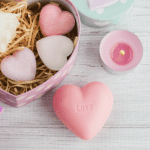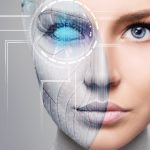 Music
Music  Music
Music  History
History 10 Less Than Jolly Events That Occurred on December 25
 Weird Stuff
Weird Stuff 10 Funny Ways That Researchers Overthink Christmas
 Politics
Politics 10 Political Scandals That Sent Crowds Into the Streets
 Weird Stuff
Weird Stuff Ten Bizarre Facts About The Doge Meme
 Our World
Our World 10 Ways Your Christmas Tree Is More Lit Than You Think
 Movies and TV
Movies and TV The 10 Coolest Stars to Set Sail on The Love Boat
 History
History 10 Things You Didn’t Know About the American National Anthem
 Technology
Technology Top 10 Everyday Tech Buzzwords That Hide a Darker Past
 Humans
Humans 10 Everyday Human Behaviors That Are Actually Survival Instincts
 Music
Music 10 Surprising Origin Stories of Your Favorite Holiday Songs
 History
History 10 Less Than Jolly Events That Occurred on December 25
 Weird Stuff
Weird Stuff 10 Funny Ways That Researchers Overthink Christmas
Who's Behind Listverse?

Jamie Frater
Head Editor
Jamie founded Listverse due to an insatiable desire to share fascinating, obscure, and bizarre facts. He has been a guest speaker on numerous national radio and television stations and is a five time published author.
More About Us Politics
Politics 10 Political Scandals That Sent Crowds Into the Streets
 Weird Stuff
Weird Stuff Ten Bizarre Facts About The Doge Meme
 Our World
Our World 10 Ways Your Christmas Tree Is More Lit Than You Think
 Movies and TV
Movies and TV The 10 Coolest Stars to Set Sail on The Love Boat
 History
History 10 Things You Didn’t Know About the American National Anthem
 Technology
Technology Top 10 Everyday Tech Buzzwords That Hide a Darker Past
 Humans
Humans 10 Everyday Human Behaviors That Are Actually Survival Instincts
Using 10 Well-Known Technologies in the Most Unusual Ways
For our day-to-day lives, technology offers both comfort and convenience, embedded so deeply in our routines that its presence is almost invisible. Yet beyond the mundane uses of our gadgets and software lies a world where innovation meets creativity, turning ordinary technology into something extraordinary. This list explores the most unusual and inventive applications of well-known technologies, each revealing a surprising twist on familiar systems and tools.
Technological advances typically aim to solve problems or enhance efficiency, but sometimes they achieve more than their intended purpose. By pushing the boundaries of conventional use, these technologies uncover new possibilities and applications that are as unexpected as they are ingenious.
However, this list is not just a compilation of quirky facts; it’s a testament to human creativity’s limitless potential when applied to even the most established technologies. Join us in exploring how familiar tools can do astonishing things, proving that with a touch of creativity, the possibilities are endless.
Related: 10 Incredible Innovations in Invisibility Cloak Technology
10 Using Lasers to Create Artificial Stars in Earth’s Atmosphere
Lasers, typically associated with cutting-edge medical treatments, military applications, and entertainment, have found a niche application in the field of astronomy that is nothing short of stellar. By employing high-powered lasers, astronomers have devised a method to improve our view of the cosmos from Earth, which is often blurred by the planet’s atmosphere.
In this unique application, lasers are aimed at Earth’s upper atmosphere to create what are known as artificial guide stars. These are not real stars but bright points of light formed by exciting sodium atoms at high altitudes. This process results in a luminescent spot that mimics the natural twinkle of stars. The artificial stars are crucial in adaptive optics systems used by ground-based telescopes. By measuring the distortion in the light from these laser-induced stars, the adaptive optics system can adjust the telescope’s mirrors in real time to correct for the blurring effects caused by Earth’s atmosphere.
The creation of artificial stars allows astronomers to achieve higher-resolution images, enabling more detailed observations of distant galaxies, star clusters, and other celestial bodies. This technology not only enhances our understanding of the universe but also demonstrates an inventive repurposing of laser technology, proving that even the stars are not beyond the reach of human ingenuity.[1]
9 Using Solar Panels to Make Clothes
Solar panels, a cornerstone of renewable energy solutions, harness sunlight to generate electricity. Most panels are traditionally seen on rooftops and in large-scale solar farms. These panels consist of photovoltaic cells that convert light into electrical power, playing a vital role in the shift toward sustainable energy. However, their application has taken a fashionable turn, integrating into the very fabric of our daily wear.
Designers and engineers have collaborated to weave photovoltaic materials into textiles, creating garments that not only offer style but also function as wearable power sources. These innovative clothes capture solar energy throughout the day, allowing wearers to charge devices on the go simply by plugging them into their jackets or trousers. The integration of solar technology into clothing represents a significant leap in wearable technology, marrying functionality with environmental consciousness.
The potential impacts of solar-powered clothing are extensive, especially for those who are constantly mobile and away from traditional power sources. Hikers, journalists, and outdoor enthusiasts can benefit greatly by having their electronic devices powered by their attire. This unusual use of solar panels not only promotes renewable energy but also pushes the boundaries of how we think about clothing and technology, transforming every sunlit walk into a chance to recharge our digital lives.[2]
8 Using Semiconductors to Make Electronic Noses and Tongues
Semiconductors are the backbone of modern electronics, found in everything from computers to smartphones. These materials have unique properties that allow them to conduct electricity under certain conditions, making them essential for creating various electronic components. Beyond their conventional use, semiconductors are now paving the way for the development of electronic noses and tongues, devices that mimic human sensory abilities.
Electronic noses and tongues utilize arrays of sensors made from semiconductor materials to detect and analyze complex chemical mixtures. These devices translate chemical interactions into electrical signals that can be interpreted by computers to identify specific flavors or odors. The electronic nose, for example, is used in quality control processes in the food, beverage, and cosmetics industries, where it assesses the aroma profiles of products to ensure consistency and quality.
Similarly, electronic tongues are employed to evaluate the taste of food and beverages, detect pollutants in water, or even in the medical field to diagnose diseases based on saliva analysis. This technology provides a high level of precision and repeatability, offering a valuable tool for industries where taste and smell are crucial. By repurposing semiconductor technology in this way, we can achieve a deeper understanding and control of flavors and fragrances, enhancing product development and safety across various sectors.[3]
7 Using 3D Printers to Make Food
3D printers, initially designed for creating three-dimensional objects from digital models, have found an innovative application in the culinary arts. These printers traditionally layer materials like plastic or metal to build complex shapes and structures, an approach that is now being transformed to cater to gastronomic creativity.
In the culinary world, 3D food printers use edible ingredients as their “ink,” carefully depositing them layer by layer to construct intricate and customizable edible items. From chocolates and pasta to intricate cake decorations and even complex dishes, the range of textures and flavors that can be achieved is expansive. This technology allows chefs to experiment with forms and designs previously unattainable through traditional cooking methods, pushing the boundaries of what is possible in the kitchen.
3D food printing is particularly promising in personalized nutrition and large-scale food production. It offers the potential to precisely control the ingredients, catering to specific dietary requirements without sacrificing taste or aesthetics. As this technology continues to evolve, it may become a common sight in both home kitchens and high-end restaurants, making the culinary experience more interactive and customized. The intersection of technology and traditional cooking techniques through 3D printing invites us to rethink the future of food preparation and consumption.[4]
6 Using Blockchain to Track the Provenance and Authenticity of Luxury Goods
Blockchain technology, best known as the backbone of cryptocurrencies like Bitcoin, operates as a decentralized digital ledger that records transactions across multiple computers. This ensures that any recorded data cannot be altered retroactively without altering all subsequent blocks, offering a high level of security and transparency. Originally designed for digital currency, the technology has found a novel application in the luxury goods market.
In this unconventional use, blockchain is employed to verify the authenticity and trace the entire history of luxury items such as designer handbags, exclusive watches, and fine wines. Each product is given a unique digital identity on the blockchain, which logs details about its origin, previous owners, and transaction history. This provides a permanent and tamper-proof record, helping to combat counterfeiting and unauthorized resale in the luxury market.
Consumers can access this data via a simple scan with their smartphones, providing them with peace of mind about the legitimacy of their purchases. This application not only enhances consumer trust but also adds value to the items by providing a detailed history of their ownership and authenticity. As blockchain continues to merge with different industries, its use in safeguarding the heritage and integrity of luxury goods showcases its versatility beyond financial transactions.[5]
5 Birds Using Quantum Mechanics to Navigate
Quantum mechanics, the branch of physics that explores the behavior of particles at the smallest scales, seems far removed from the natural world of bird migration. Yet researchers have discovered that quantum mechanics plays a crucial role in how some bird species navigate across continents during their migratory journeys. This intersection of high-level physics and avian biology highlights an incredible application of quantum principles outside the laboratory.
Birds such as the European robin are believed to use a quantum phenomenon known as entanglement to sense Earth’s magnetic field and use it for navigation. This process involves cryptochromes, light-sensitive proteins in their eyes that respond to magnetic fields. When light hits these proteins, it can trigger a photochemical reaction that involves electron pairs. The theory suggests that these electrons become entangled, and their spin states are affected by the magnetic field, providing directional information to the bird.
This ability allows migratory birds to undertake their vast journeys with remarkable accuracy, even during overcast conditions where traditional visual cues are obscured. Using quantum entanglement by birds to navigate is a fascinating example of nature’s ingenuity, effectively turning these creatures into tiny quantum computers. This extraordinary adaptation not only expands our understanding of migration but also opens new pathways for technology, potentially inspiring quantum-based navigation systems in the future.[6]
4 Using LEDs to Create Interactive Tattoos
Light-emitting diodes (LEDs) have revolutionized the lighting and display industries with their energy efficiency and long lifespan. These small electronic components emit light when an electric current passes through them and are found in everything from digital clocks to television screens. However, a novel application of LED technology is emerging in the world of fashion and personal expression: interactive tattoos.
Researchers have developed thin, flexible LEDs that can be embedded into temporary tattoos. These smart tattoos adhere to the skin and can be programmed to change color or light up in response to various stimuli. For instance, some tattoos are designed to monitor health by reacting to changes in the wearer’s body temperature or sweat composition, indicating certain medical conditions or physical exertion levels.
Moreover, these LED tattoos can interact with external devices, lighting up when receiving notifications from a smartphone or changing color according to the beat of music at a concert. This innovative use of LED technology transforms tattoos from purely aesthetic decorations into dynamic, interactive displays that offer both functionality and style.
The fusion of technology with body art opens up new avenues for wearable technology, enhancing user interaction in an intimately personal way. It represents a merging of biotech and fashion that could redefine how we use technology to interact with the world around us.[7]
3 Using Old Computer Parts to Make Sculptures
In the digital age, technology rapidly becomes obsolete, leaving behind a trail of electronic waste that poses environmental challenges. Old computer parts, typically discarded after their useful life, consist of various components such as circuit boards, keyboards, and hard drives. Although no longer viable for computing, these elements have found a new life in the art world.
Artists and creative minds around the globe are repurposing these electronic remnants into intricate sculptures and artworks. By assembling motherboards, microchips, and wires, they construct visually stunning pieces that comment on issues like technology’s impact on society and the environment. These artworks range from small, detailed figurines to large-scale installations, each piece showcasing the unique textures and colors of electronic components.
This artistic trend not only provides a creative outlet but also promotes environmental sustainability by recycling materials that would otherwise contribute to landfill waste. Through these sculptures, artists raise awareness about the lifecycle of technology and the importance of responsible electronic waste management. The transformation of old computer parts into art challenges our perceptions of waste and recycling, turning what was once considered trash into treasured cultural expressions.[8]
2 Using Magnetic Fields to Cook
Magnetic fields, fundamental aspects of electromagnetism, are typically harnessed in various technologies such as MRI machines and electric motors. However, one of the more unconventional applications of magnetic fields lies in the realm of cooking, specifically through a process known as induction heating. This method uses magnetic fields to generate heat directly in the cookware, making it an efficient alternative to traditional cooking methods.
Induction cooking utilizes a copper coil under the cooktop surface, through which an alternating electric current is passed. This current produces a dynamic magnetic field that penetrates the cooking pot made of ferromagnetic material. The magnetic field induces whirls of electrical current in the pot, which generates heat due to the resistance of the metal. The pot then heats up and cooks the food while the cooktop itself stays relatively cool.
This technology not only speeds up the cooking process but also enhances safety and energy efficiency in the kitchen. Induction cooktops are precise and can be adjusted instantaneously, unlike gas or electric stoves, providing better temperature control. The use of magnetic fields in cooking demonstrates a fascinating intersection of physics and everyday life, offering a glimpse into how scientific principles can be applied in creative and practical ways to improve traditional activities.[9]
1 Using Radar to Study Insect Migrations
Radar technology, widely known for its application in navigation and meteorology, utilizes radio waves to detect the position and speed of objects. This sophisticated tool has also been adapted in a rather unexpected domain: the study of insect migrations. By employing radar, scientists can gain unprecedented insights into the movements of vast swarms of insects across the globe.
Biologists use specialized radar systems to monitor and track the migratory patterns of insects such as bees, locusts, and butterflies. These radars can detect the density, speed, and direction of insect swarms, providing valuable data that helps understand how insects respond to climate change, habitat destruction, and agricultural expansion. The information gathered is crucial for conservation efforts and managing pest populations affecting crop production.
Moreover, radar technology helps predict the timing and scale of migrations, aiding farmers and policymakers in making informed decisions to protect crops and balance ecosystems. Adapting radar for such purposes showcases the versatility of this technology and its potential beyond traditional uses, contributing significantly to ecological research and environmental management.[10]








